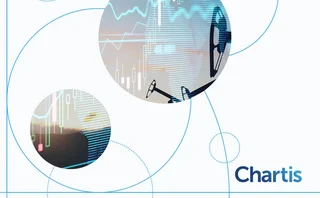
UK and Danish greenhouse gas allowance schemes see first swap
Anglo-Dutch energy major Royal Dutch/Shell Group and Danish electricity supplier Elsam completed the first greenhouse gas (GHG) emissions swap between government-backed allowance schemes on May 7.
Denmark and the UK are the only countries to have set up government-backed emission trading schemes. The Danish scheme was set up in 2000, while the UK programme started in April 2002 – although forward transactions have been conducted since September 2001.
The swap is also significant because there is currently no regulation governing the fungibility of cross-border deals between government-mandated schemes. This means a UK allowance cannot be physically moved on to a Danish allowance account and vice versa. But both Shell and Elsam believe there is value in the scheme.
The Danish scheme places restrictions on the banking of allowances when the trading scheme ends in 2003. But UK allowances are bankable until 2007 and, with some contingencies, are also bankable into the first Kyoto Protocol compliance period of 2008-2012. So swapping Danish allowances for UK allowances allows Elsam to bank some emissions assets for future compliance periods.
For Shell, Garth Edward, trading manager, environmental products with the firm in London, said there are a number of commercial rationales for the swap. “A company that was long in the UK and is short in Denmark would be able to transfer its effective length into Denmark,” said Edward.
Shell is active in both markets, having taken on a voluntary emissions cap under the UK scheme and a mandatory cap in the Danish one.
Michael Intrator, managing director, global emissions markets at Natsource, claimed the transaction represents the future of global emissions trading. “The swap demonstrates that trades in government-backed greenhouse gas emission allowances between jurisdictions can make sense even in the absence of clear rules of fungibility. This is recognition that companies can utilise the global trading market to achieve economic and environmental objectives,” he said.
Greenhouse gases, which are mainly produced by the burning of fossil fuels to generate energy, are blamed by many scientists for the dangerous warming of the planet. Emission trading is seen by many in the industry as an efficient market-based solution to such pollution. It allows businesses to buy and sell permits that allow them to emit gases within a declining, overall limit. Energy-efficient companies can sell their unused permits to less efficient ones, thus providing a financial reward for environmental virtue.
Only users who have a paid subscription or are part of a corporate subscription are able to print or copy content.
To access these options, along with all other subscription benefits, please contact info@risk.net or view our subscription options here: http://subscriptions.risk.net/subscribe
You are currently unable to print this content. Please contact info@risk.net to find out more.
You are currently unable to copy this content. Please contact info@risk.net to find out more.
Copyright Infopro Digital Limited. All rights reserved.
As outlined in our terms and conditions, https://www.infopro-digital.com/terms-and-conditions/subscriptions/ (point 2.4), printing is limited to a single copy.
If you would like to purchase additional rights please email info@risk.net
Copyright Infopro Digital Limited. All rights reserved.
You may share this content using our article tools. As outlined in our terms and conditions, https://www.infopro-digital.com/terms-and-conditions/subscriptions/ (clause 2.4), an Authorised User may only make one copy of the materials for their own personal use. You must also comply with the restrictions in clause 2.5.
If you would like to purchase additional rights please email info@risk.net
More on Energy
ETRM systems 2024: market update and vendor landscape
This Chartis report evaluates energy trading and risk management systems that provide front-to-back, asset class-specific and geography-specific coverage, and considers the full energy trade lifecycle
CTRM systems 2024: market update and vendor landscape
A Chartis report on commodity trading and risk management systems that considers its different applications and addresses the market and vendor dynamics to determine the long-term and structural impacts of the overarching market evolution on the…
Energy Risk Commodity Rankings 2024: markets buffeted by geopolitics and economic woes
Winners of the 2024 Commodity Rankings steeled clients to navigate competing forces
Chartis Energy50
The latest iteration of Chartis’ Energy50 ranking
Energy trade surveillance solutions 2023: market and vendor landscape
The market for energy trading surveillance solutions, though small, is expanding as specialist vendors emerge, catering to diverse geographies and market specifics. These vendors, which originate from various sectors, contribute further to the market’s…
Achieving net zero with carbon offsets: best practices and what to avoid
A survey by Risk.net and ION Commodities found that firms are wary of using carbon offsets in their net-zero strategies. While this is understandable, given the reputational risk of many offset projects, it is likely to be extremely difficult and more…
Chartis Energy50 2023
The latest iteration of Chartis' Energy50 2023 ranking and report considers the key issues in today’s energy space, and assesses the vendors operating within it
ION Commodities: spotlight on risk management trends
Energy Risk Software Rankings and awards winner’s interview: ION Commodities







